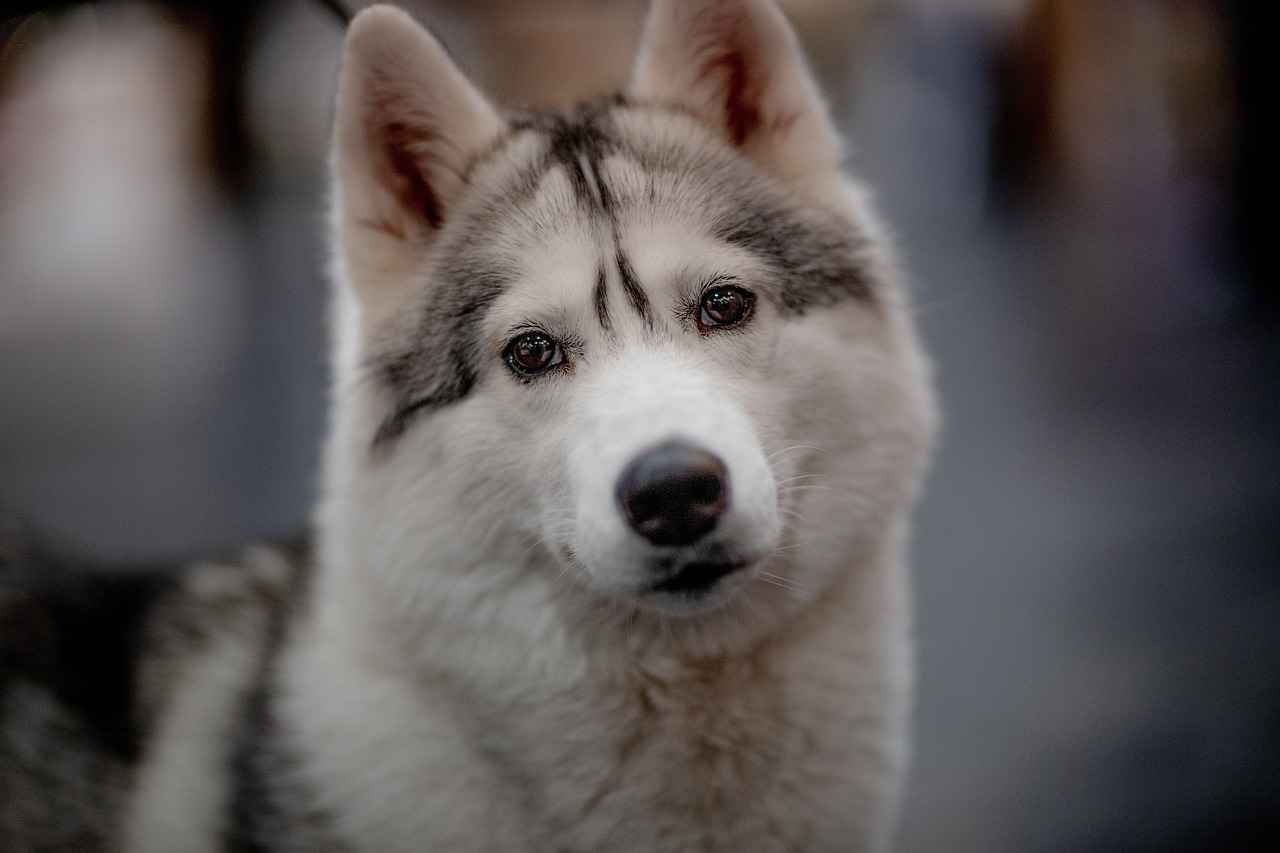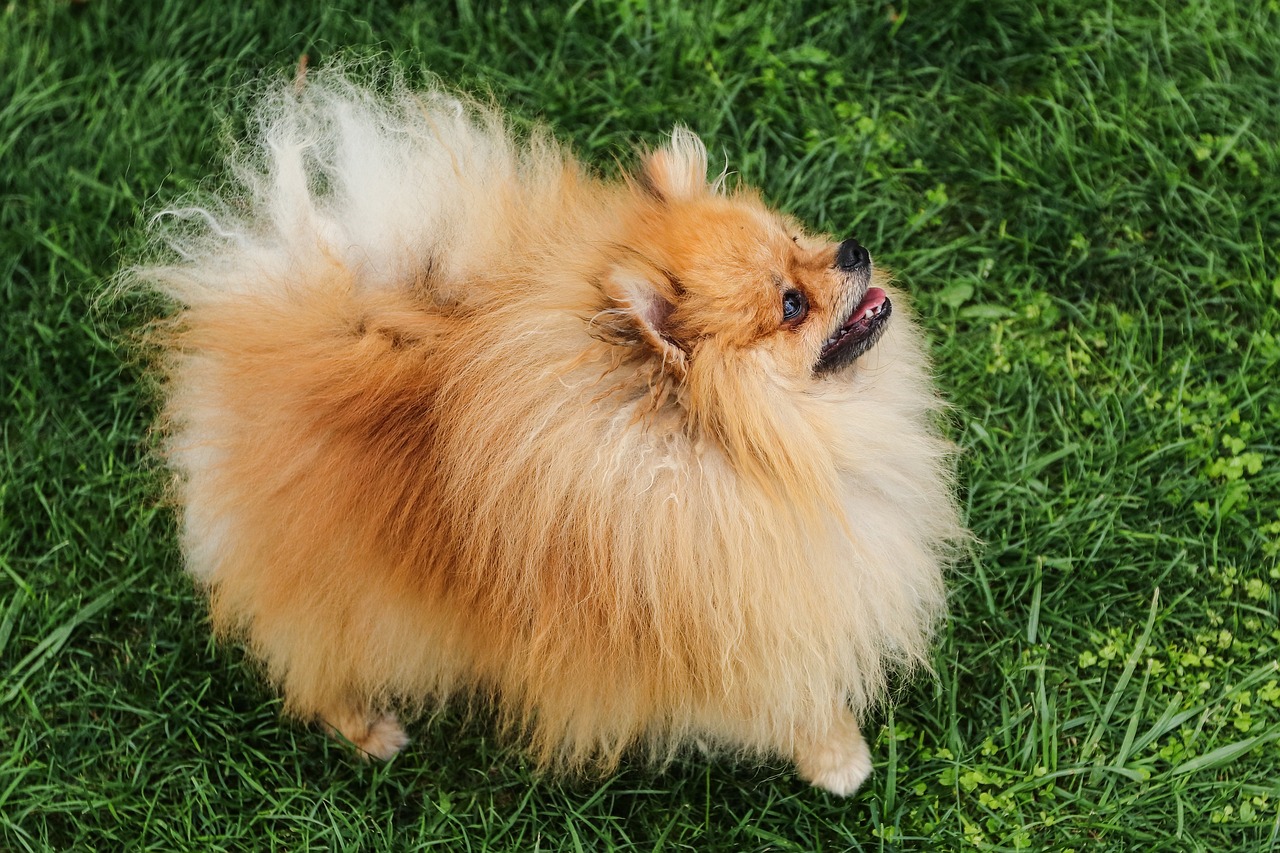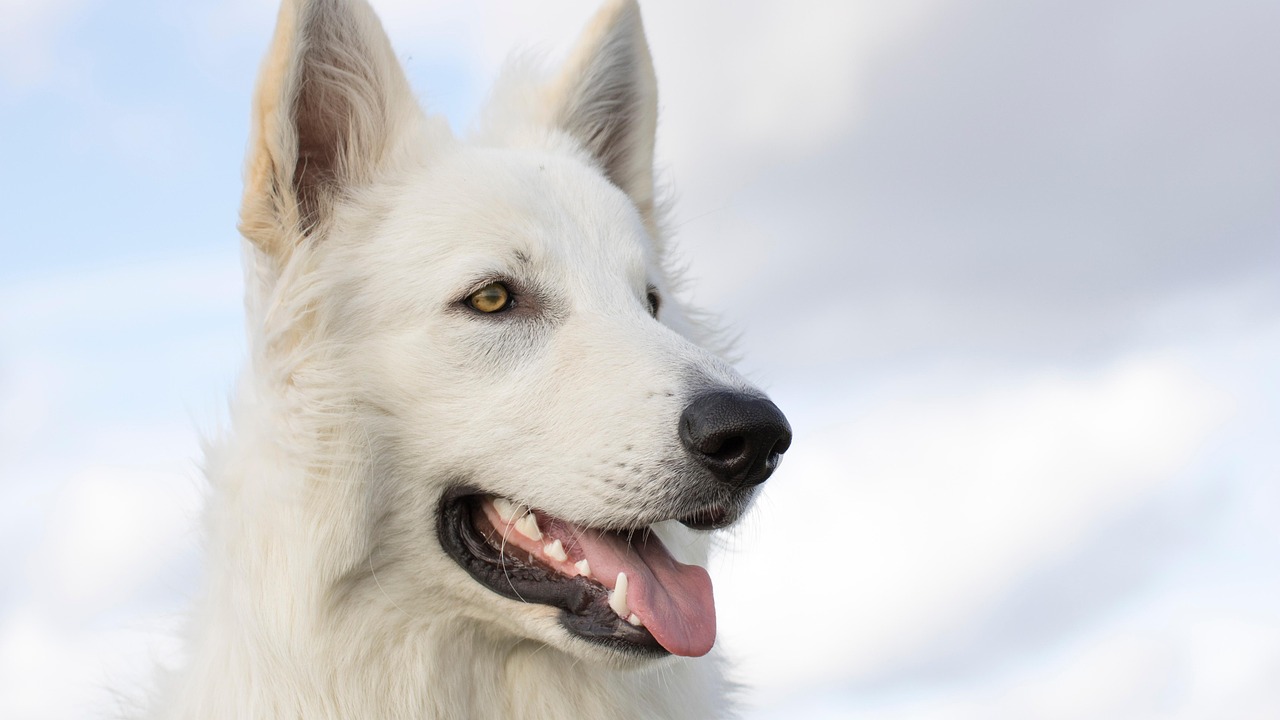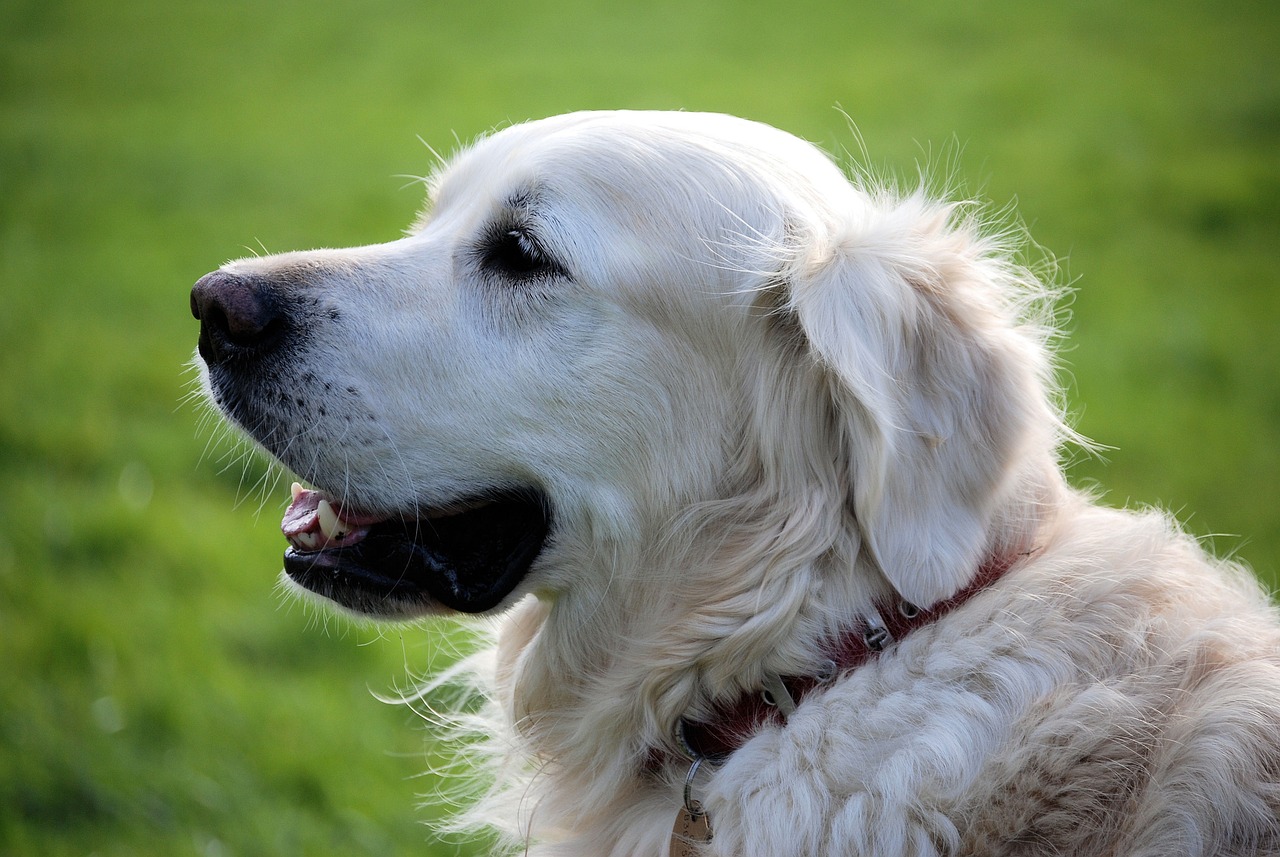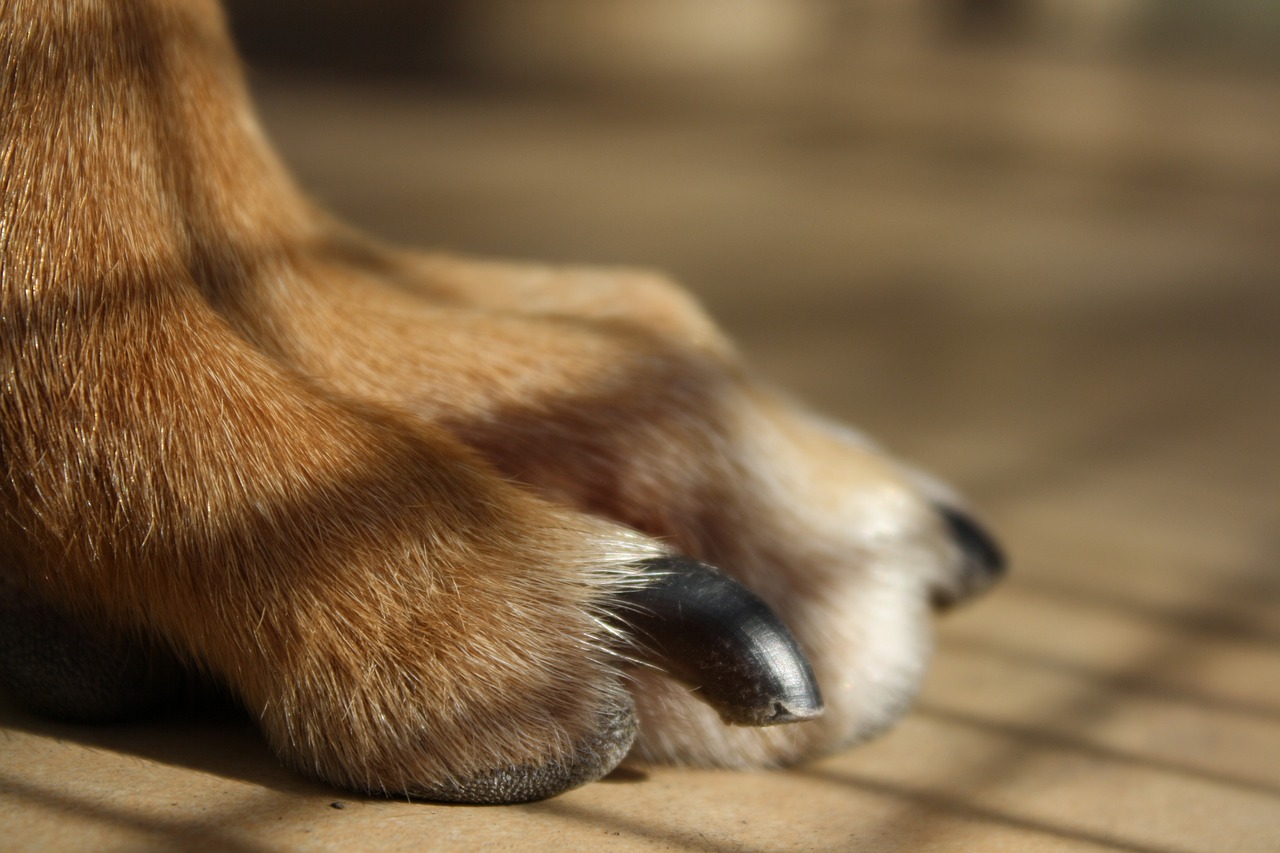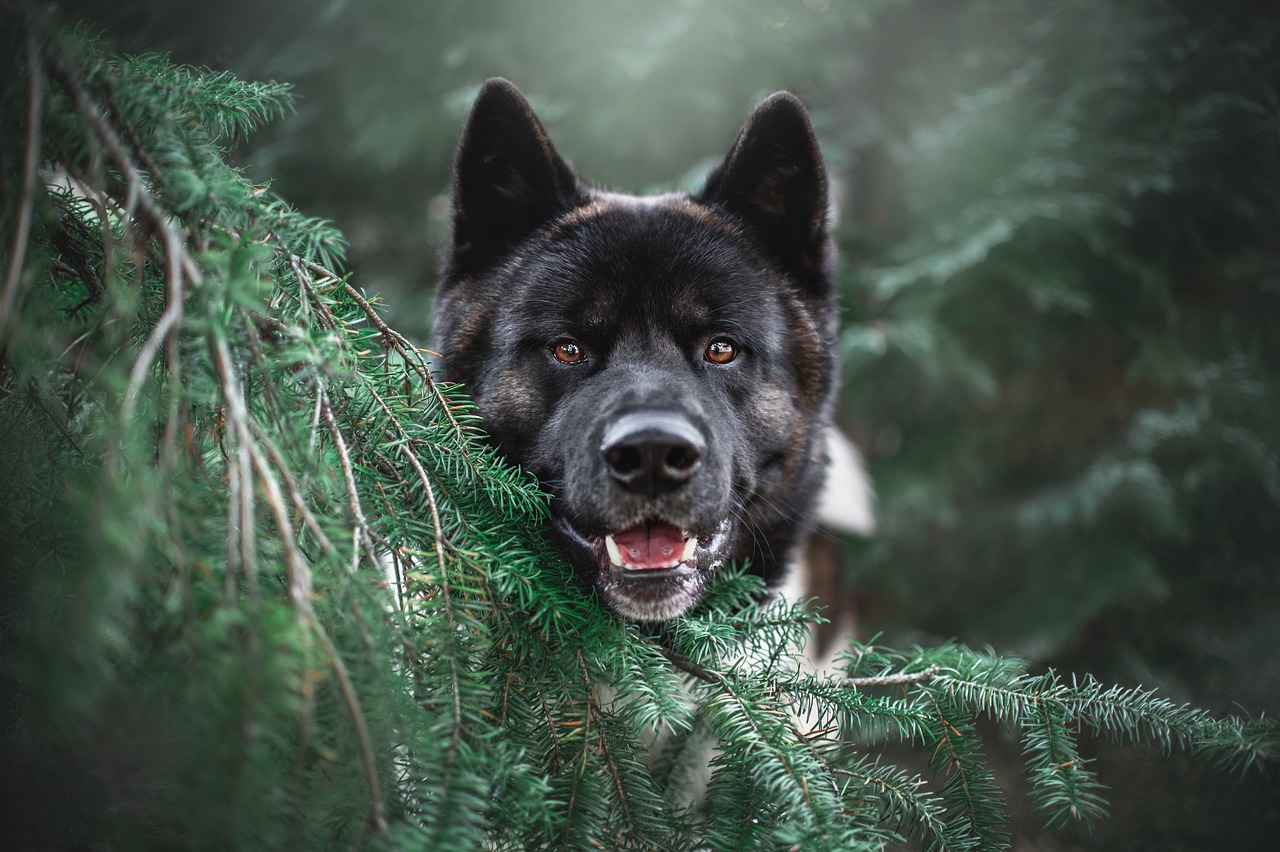This article delves into the fascinating world of canine bite strength, comparing the formidable capabilities of wild dogs with their domestic counterparts. By examining various factors such as anatomy, behavior, and environmental influences, we can better understand the biting prowess of these two groups of dogs.
Understanding Bite Force Measurement
Bite force is quantified in pounds per square inch (PSI), offering a standardized method to compare the biting strength across different dog species. This measurement is crucial for understanding how wild and domestic dogs differ in their biting capabilities.
Comparative Anatomy: Wild vs. Domestic Dogs
The anatomical differences between wild and domestic dogs play a significant role in their bite strength. Key factors include:
- Jaw Structure: Wild dogs typically possess a more robust jaw structure, enabling them to apply greater force when biting.
- Muscle Development: Stronger jaw muscles in wild dogs are essential for their survival, allowing them to exert higher bite forces.
- Teeth Size and Shape: Wild dogs have teeth adapted for gripping and tearing, enhancing their ability to deliver powerful bites.
Behavioral Factors Influencing Bite Strength
Behavior is another critical aspect affecting bite strength. Wild dogs often exhibit more aggressive biting behaviors compared to domestic dogs, which can influence their effectiveness in hunting and defense.
Environmental Influences on Bite Strength
The habitats of wild and domestic dogs impact their physical development. For example:
- Survival Needs: Wild dogs rely on hunting for food, leading to evolutionary adaptations that enhance their biting capabilities.
- Domestication Effects: Domestic dogs have been bred for companionship, which may result in reduced bite strength due to a focus on temperament over physical attributes.
Notable Examples of Wild Dog Species
Several wild dog species, such as wolves and African wild dogs, showcase remarkable bite strength:
- The Gray Wolf: With a bite force of approximately 1,200 PSI, gray wolves are among the strongest canids, capable of taking down large prey.
- African Wild Dog: These dogs utilize teamwork and endurance in hunting, supported by their strong bites for capturing prey.
Health Implications of Bite Strength
Understanding bite strength has significant implications for both wild and domestic dogs, especially regarding behavior and safety. Responsible ownership and training can help prevent dog bites.
Conclusion: The Bite Strength Debate
In summary, while wild dogs generally exhibit stronger bites than domestic dogs due to their anatomical and behavioral adaptations, recognizing these differences is essential for appreciating the complexities of canine evolution and behavior.

Understanding Bite Force Measurement
Bite force is a significant aspect of understanding the capabilities of different canine species, measured in pounds per square inch (PSI). This measurement provides a quantitative comparison of how various dogs, both wild and domestic, utilize their biting strength in different contexts.
The concept of bite force is critical for evaluating a dog’s ability to hunt, defend, and interact with its environment. In the wild, dogs rely on their bite strength for survival, while domestic dogs may use it primarily for play or protection. Understanding the nuances of bite force not only highlights the evolutionary adaptations of these animals but also informs owners and trainers about the potential risks associated with dog behavior.
- Measurement Techniques: Bite force is typically measured using specialized equipment that captures the maximum pressure exerted by a dog’s jaws.
- Comparative Studies: Research has shown that wild canids, such as wolves and foxes, exhibit higher PSI ratings compared to most domestic breeds.
- Influencing Factors: Factors such as age, size, and health can also affect a dog’s bite force, making it essential to consider these variables in any assessment.
For instance, the Gray Wolf, with a bite force of approximately 1,200 PSI, showcases the extraordinary adaptations of wild dogs, allowing them to take down prey much larger than themselves. In contrast, many domestic breeds, bred for temperament and companionship, often display significantly lower bite forces, reflecting their different roles in human society.
In summary, understanding bite force measurement is crucial for appreciating the physical capabilities of both wild and domestic dogs. This knowledge aids in responsible ownership, training, and conservation efforts, ensuring that both types of canines can thrive in their respective environments.

Comparative Anatomy: Wild vs. Domestic Dogs
The anatomical differences between wild and domestic dogs play a crucial role in determining their bite strength. These differences encompass various factors, including jaw structure, teeth size, and muscle development, which collectively influence how effectively each type of dog can bite.
| Aspect | Wild Dogs | Domestic Dogs |
|---|---|---|
| Jaw Structure | More robust and powerful, designed for hunting | Varies widely, often less muscular |
| Teeth Size | Larger and sharper for tearing flesh | Smaller and more varied based on breed |
| Muscle Development | Highly developed for strength and endurance | Less developed, often bred for temperament |
Jaw Structure and Mechanics
The jaw structure of wild dogs is typically more robust, allowing for greater leverage and force application during biting. This anatomical design is essential for their survival, enabling them to hunt and consume prey effectively.
Muscle Development
Wild dogs often exhibit stronger jaw muscles. These muscles are crucial for their predatory lifestyle, enabling them to exert significant force when biting, which is necessary for subduing prey.
Teeth Size and Shape
The size and shape of teeth in wild dogs are specifically adapted for gripping and tearing flesh, contributing to their ability to deliver powerful bites. In contrast, domestic dogs have a wider variety of teeth shapes, reflecting their diverse roles as companions rather than hunters.
Understanding these anatomical differences not only highlights the evolutionary adaptations of wild dogs but also underscores the impact of domestication on domestic breeds. This knowledge can inform dog owners about the inherent capabilities and needs of their pets, fostering better care and training practices.
Jaw Structure and Mechanics
The jaw structure of wild dogs is typically more robust compared to that of domestic dogs. This anatomical difference is crucial for their survival in the wild, as it allows for enhanced leverage and force application during biting. The evolution of their jaw structure is a response to their predatory lifestyle, where the ability to capture and consume prey is essential.
Wild dogs possess a broader jaw with stronger muscles, which enables them to exert greater force when biting. This is particularly important when hunting larger animals, as a powerful bite can secure a firm grip on the prey, ensuring successful capture. Additionally, the jaw’s mechanical advantage allows wild dogs to apply significant pressure, which is vital for breaking through tough hides and muscles of their prey.
Muscle Development
The jaw muscles of wild dogs are more developed than those of their domestic counterparts. This increased muscle mass contributes to their ability to generate higher bite forces. Wild dogs rely on these strong muscles not only for hunting but also for defending their territory and pack. In contrast, domestic dogs, often bred for companionship, may have less emphasis on jaw strength, leading to a reduction in bite force.
Teeth Size and Shape
The teeth of wild dogs are specifically adapted for their diet, featuring larger and sharper canines that are effective for gripping and tearing flesh. This anatomical adaptation complements their robust jaw structure, allowing them to deliver powerful bites that are essential for survival. Domestic dogs, while still having strong teeth, may have variations in size and shape due to selective breeding, which can affect their biting capabilities.
In summary, the jaw structure and mechanics of wild dogs are key factors that contribute to their enhanced biting strength. This adaptation not only aids in hunting but also plays a significant role in their overall survival in the wild.
Muscle Development
Muscle Development in Wild Dogs plays a pivotal role in their survival and hunting strategies. Unlike domestic dogs, wild dogs have evolved to possess stronger jaw muscles, which are essential for their predatory lifestyle. These muscles allow them to exert significant force when biting, enabling them to effectively capture and consume their prey.
The anatomical structure of wild dogs is designed for efficiency and power. Their jaw muscles are not only larger but also more developed than those of domestic breeds. This muscular development is a direct response to their need for hunting and feeding in the wild, where they face various challenges and competition for resources.
In wild dogs, the muscle fibers are often denser and more powerful, which contributes to their ability to bite with greater strength. For instance, species like the Gray Wolf and African Wild Dog showcase remarkable muscle development that allows them to take down prey much larger than themselves. The Gray Wolf can exert a bite force of approximately 1,200 PSI, a testament to their evolutionary adaptations.
| Wild Dog Species | Bite Force (PSI) | Muscle Development |
|---|---|---|
| Gray Wolf | 1,200 | Highly developed |
| African Wild Dog | Approx. 800 | Strong and agile |
This muscle strength is not just about raw power; it also involves coordination and precision. Wild dogs often hunt in packs, which requires synchronized movements and effective communication to maximize their hunting efficiency. Their strong jaw muscles contribute to their ability to grip and hold onto prey, ensuring successful captures during hunts.
In conclusion, the muscle development of wild dogs is a critical factor that enhances their survival skills. Their stronger jaw muscles not only provide them with the ability to exert greater force when biting but also play a vital role in their overall hunting strategies, making them formidable predators in their natural habitats.
Teeth Size and Shape
The size and shape of teeth play a crucial role in the functionality and effectiveness of wild dogs as predators. Unlike domestic dogs, wild dogs have evolved to possess teeth that are specifically adapted for their hunting lifestyle. These adaptations enhance their ability to grip, tear, and consume flesh, which is essential for their survival in the wild.
Wild dogs typically have larger and sharper canine teeth compared to their domestic counterparts. The elongated canines are designed to penetrate the tough hides of their prey. This anatomical feature not only aids in delivering a powerful bite but also allows for a more effective hold on struggling animals. The incisors, which are smaller and more pointed, are adapted for shearing meat, making it easier for wild dogs to consume their catch efficiently.
Additionally, the molars of wild dogs are broader and more robust, allowing them to crush bones and extract marrow, a vital nutrient source. This adaptation is particularly important in the wild, where food scarcity can be an issue. The combination of these specialized teeth shapes enables wild dogs to maximize their nutritional intake from their prey.
In contrast, domestic dogs have been selectively bred for various traits, including temperament and appearance, often at the expense of their natural biting capabilities. As a result, many domestic breeds possess teeth that are not as well-suited for gripping and tearing flesh. This difference highlights the evolutionary pressures faced by wild dogs, which must rely on their physical adaptations to hunt and survive in their natural habitats.
In summary, the teeth size and shape of wild dogs are critical adaptations that enhance their predatory skills, allowing them to thrive in the wild. Understanding these differences not only sheds light on the evolutionary journey of canines but also emphasizes the importance of preserving the natural behaviors and habitats of wild dog species.
Behavioral Factors Influencing Bite Strength
When examining the biting capabilities of dogs, it is essential to consider the behavioral factors that significantly influence their bite strength. While anatomical differences play a crucial role, a dog’s behavior can enhance or diminish the effectiveness of its bite. This is particularly evident when comparing wild dogs to their domestic counterparts.
Wild dogs, such as wolves and African wild dogs, exhibit a range of aggressive biting behaviors that are vital for their survival. These behaviors are not merely instinctual; they are honed through their need to hunt and defend themselves in the wild. The drive to capture prey necessitates a strong and aggressive bite, which is often accompanied by a fierce determination and strategic approach to hunting.
In contrast, domestic dogs have been bred over generations for companionship and specific tasks, often leading to a more docile temperament. This selective breeding has resulted in a reduction of aggressive biting behavior, as these dogs are less likely to rely on their bite for survival. Consequently, their biting power may be less pronounced, as they are not required to exert the same force as wild canines.
Furthermore, the environment in which a dog is raised can also impact its behavior and, subsequently, its bite strength. For instance, a wild dog’s upbringing in a harsh environment fosters aggressive behaviors necessary for hunting, while a domestic dog’s sheltered life may lead to a more subdued demeanor.
In summary, the effectiveness of a dog’s bite is influenced not only by its physical anatomy but also by its behavior. Wild dogs, driven by survival instincts, exhibit more aggressive biting behaviors compared to domestic dogs, whose breeding and environment promote gentler dispositions. Understanding these behavioral factors is crucial for appreciating the complexities of canine bite strength.

Environmental Influences on Bite Strength
play a significant role in determining the physical capabilities of both wild and domestic dogs. The habitats they inhabit, combined with their evolutionary needs, shape their anatomical and behavioral traits, ultimately influencing their bite strength.
Wild dogs, such as wolves and African wild dogs, thrive in environments that require them to hunt for survival. This necessity drives evolutionary adaptations that enhance their physical attributes. For instance, their robust jaw structure and strong musculature allow them to exert considerable force when biting, which is essential for capturing and consuming prey. In the wild, these adaptations are critical for survival, as they must be able to take down animals much larger than themselves.
In contrast, domestic dogs have been selectively bred for various traits, including temperament and companionship, rather than physical prowess. This breeding has often led to a reduction in bite strength, as the emphasis has shifted from survival traits to behavioral characteristics. For example, breeds like the Chihuahua, while adorable, do not possess the same biting power as their wild counterparts, as their environment does not necessitate such strength.
Moreover, the quality of nutrition available in different environments also influences physical development. Wild dogs typically consume a diet that is high in protein and nutrients, supporting their muscular development and overall health. On the other hand, domestic dogs may not always receive optimal nutrition, depending on their owners’ choices, which can affect their physical capabilities, including bite strength.
In summary, the environments in which wild and domestic dogs live significantly impact their physical development and bite strength. Wild dogs are naturally equipped with stronger bites due to their evolutionary adaptations for hunting, while domestic dogs may exhibit reduced bite strength as a result of selective breeding and lifestyle changes.
Survival Needs of Wild Dogs
Wild dogs, unlike their domesticated counterparts, face a myriad of challenges in their natural habitats that compel them to adapt and evolve. Their survival hinges on their ability to hunt effectively for food, which has led to significant evolutionary changes that enhance their biting capabilities. These adaptations are not merely a product of necessity but are critical for their survival in the wild.
Hunting as a Necessity
In the wild, dogs such as wolves and African wild dogs rely on their hunting skills to secure food. This necessity drives them to develop stronger jaws and more powerful bite forces. The evolutionary pressure to capture and consume prey effectively has resulted in anatomical changes that provide these wild canids with distinct advantages.
Evolutionary Adaptations
- Jaw Structure: Wild dogs typically possess a more robust jaw structure, designed to apply greater force when biting. This adaptation is essential for breaking through tough hides and bones of their prey.
- Teeth Adaptation: The teeth of wild dogs are often larger and more pointed compared to domestic dogs, allowing for efficient gripping and tearing of flesh.
- Muscle Strength: Enhanced muscle development around the jaw enables wild dogs to exert significant pressure when biting, which is crucial during hunts.
Behavioral Aspects
The behavior of wild dogs further influences their biting strength. They exhibit aggressive biting techniques during hunts, which are critical for subduing prey. This behavior is a learned skill, honed through experience and social interactions within their packs.
Environmental Factors
The environments in which wild dogs thrive also play a pivotal role in shaping their biting capabilities. Factors such as prey availability, competition with other predators, and habitat conditions necessitate that wild dogs develop and maintain strong biting abilities to survive.
In conclusion, the survival needs of wild dogs drive evolutionary adaptations that enhance their biting capabilities. Understanding these adaptations not only highlights the remarkable resilience of wild canids but also underscores the importance of their conservation in the face of environmental challenges.
Domestication Effects on Bite Strength
When considering the differences in bite strength between wild and domestic dogs, it is essential to understand the profound impact of domestication. Over thousands of years, selective breeding has shaped the physical and behavioral traits of domestic dogs, often prioritizing temperament and companionship over physical capabilities.
Unlike their wild counterparts, domesticated dogs have been bred for specific traits that enhance their ability to live harmoniously with humans. This process has inadvertently led to a reduction in their bite strength. For instance, breeds like the Golden Retriever or Poodle have been selected for their gentle nature, which often translates to a less powerful bite.
- Selective Breeding: Breeders often focus on traits such as friendliness and trainability, which can lead to a decrease in physical attributes like jaw strength.
- Reduced Need for Survival: Domestic dogs typically do not need to hunt for food, diminishing the evolutionary pressure that would otherwise enhance their biting capabilities.
- Behavioral Conditioning: Training and socialization emphasize gentle behavior, further contributing to a decrease in aggressive biting tendencies.
As a result of these factors, many domestic dogs exhibit a bite force that is significantly less than that of their wild relatives. For example, the average bite force of a domestic dog ranges from 150 to 300 PSI, while wild dogs, such as wolves, can exert forces exceeding 1,200 PSI.
In conclusion, the domestication of dogs has led to a notable reduction in their bite strength, primarily due to selective breeding practices that prioritize temperament over physical prowess. Understanding these changes is crucial for dog owners and trainers, as it highlights the importance of fostering safe and positive interactions between domestic dogs and humans.
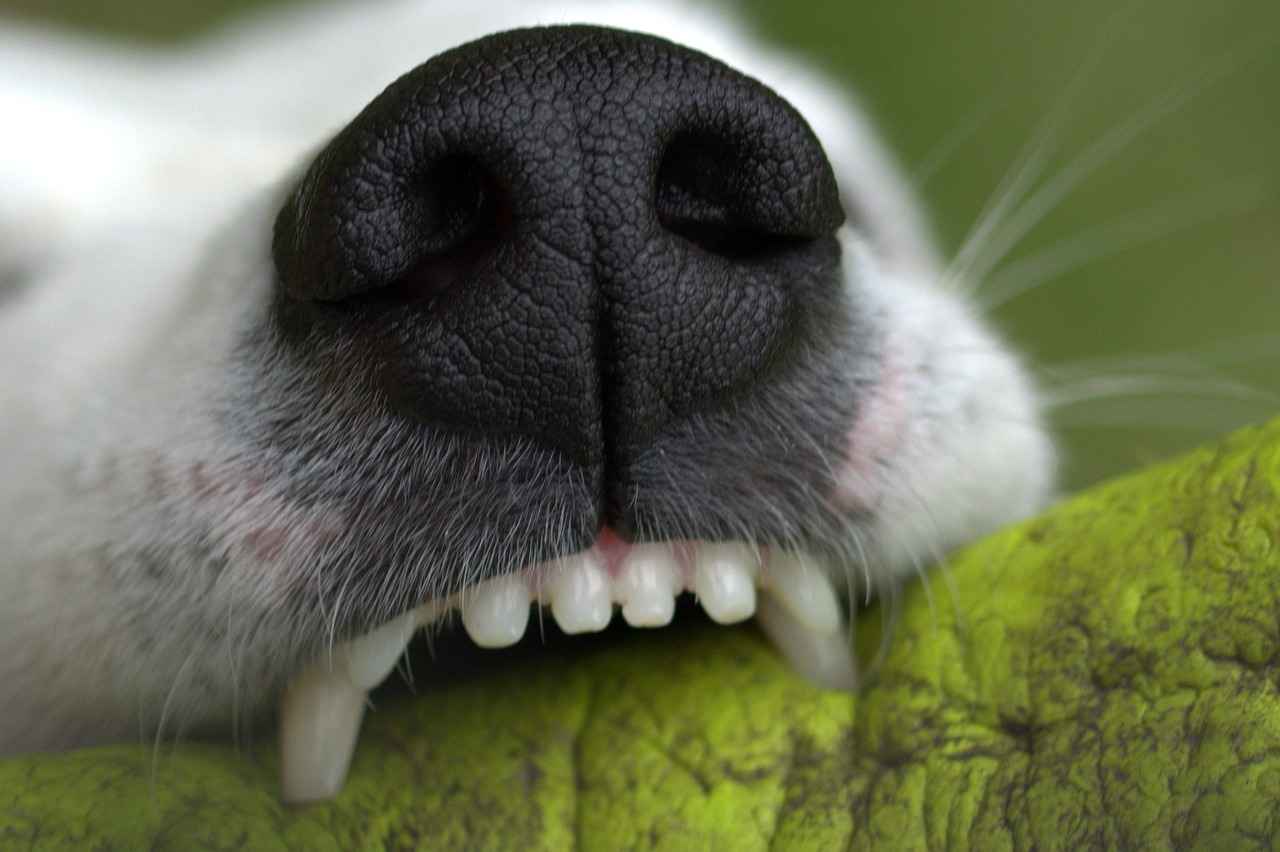
Notable Examples of Wild Dog Species
In the realm of canids, wild dogs exhibit remarkable adaptations that enhance their predatory skills, particularly in terms of bite strength. Understanding these adaptations provides insight into how various species have evolved to thrive in their environments.
Several wild dog species stand out due to their impressive bite strength, which is crucial for their survival. Below are some notable examples:
- The Gray Wolf
Gray wolves are renowned for their formidable bite strength, estimated at around 1,200 PSI. This powerful bite allows them to hunt and take down large prey, making them one of the most effective predators in their habitats.
- African Wild Dog
African wild dogs, also known as painted wolves, have a unique hunting strategy that emphasizes teamwork and endurance. Their bite strength, while not as powerful as that of gray wolves, is still significant and is complemented by their ability to work closely in packs to capture prey.
- Asiatic Wild Dog
Also known as the dhole, the Asiatic wild dog possesses a strong bite that aids in hunting smaller prey. Their social structure and hunting techniques are similar to those of African wild dogs, showcasing the diversity of hunting strategies among wild canids.
These species exemplify the diverse adaptations that wild dogs have developed, particularly in relation to their bite strength. Their anatomical features, such as jaw structure and muscle development, are tailored to meet the demands of their predatory lifestyles.
Understanding the bite strength of these wild dog species not only highlights their evolutionary success but also emphasizes the importance of conservation efforts to protect their natural habitats and ensure their survival in the wild.
The Gray Wolf
The Gray Wolf (Canis lupus) is one of the most iconic wild canids, renowned for its strength and social behavior. Among the various species of wolves, the Gray Wolf stands out not only for its adaptability but also for its remarkable physical attributes, particularly its bite force.
Gray wolves possess one of the strongest bites among canids, with a bite force estimated at approximately 1,200 PSI. This incredible strength allows them to effectively hunt and take down large prey, such as deer and elk. The anatomy of their jaw and the powerful muscles that support it enable these predators to exert significant force, making them formidable hunters.
The strength of a Gray Wolf’s bite is a result of several biological adaptations:
- Jaw Structure: The robust jaw structure provides greater leverage, essential for gripping and tearing flesh.
- Muscle Development: Strong jaw muscles are crucial for applying force, allowing wolves to efficiently consume their prey.
- Teeth Size and Shape: Their teeth are designed for gripping and slicing, further enhancing their ability to deliver powerful bites.
Behavior also plays a significant role in the effectiveness of a Gray Wolf’s bite. Wolves are social animals that hunt in packs, which requires coordinated efforts and aggressive biting behavior to successfully capture prey. This social structure not only enhances their hunting success but also reinforces their biting capabilities.
In summary, the Gray Wolf’s impressive bite strength is a critical adaptation that has evolved to meet the demands of their predatory lifestyle. Understanding the anatomy and behavior of these magnificent animals provides insight into their role in the ecosystem and the importance of their conservation.
African Wild Dog
is a fascinating species known for its unique hunting strategies and social behaviors. These highly social animals, also known as Lycaon pictus, are native to sub-Saharan Africa and are recognized for their striking coat patterns and remarkable teamwork during hunts.
The African wild dog exhibits a strong bite, which is essential for its survival in the wild. Unlike domestic dogs, their bite force is adapted for capturing and subduing prey, reflecting their role as apex predators. This article will delve into the various aspects of the African wild dog, including its hunting strategies, social structure, and conservation status.
African wild dogs employ a sophisticated hunting strategy that emphasizes teamwork and endurance. They hunt in packs, allowing them to coordinate their movements and effectively chase down prey over long distances. This method not only increases their chances of a successful hunt but also minimizes energy expenditure.
Their strong bite is complemented by anatomical features such as robust jaw muscles and sharp teeth, which are designed for gripping and tearing flesh. These adaptations enable them to deliver powerful bites, crucial for immobilizing their prey quickly.
Social bonds within a pack are vital for the success of their hunting strategies. African wild dogs exhibit complex social behaviors, including cooperative hunting and sharing of food. This social structure not only enhances their hunting efficiency but also strengthens the pack’s overall cohesion.
Despite their remarkable adaptations, African wild dogs face significant threats from habitat loss and human-wildlife conflict. Conservation efforts are crucial to ensure the survival of this species, focusing on habitat protection and promoting coexistence with local communities.
In conclusion, the African wild dog is a remarkable example of evolution in action, showcasing the importance of teamwork and physical adaptations in the animal kingdom. Understanding their behaviors and challenges is essential for effective conservation strategies.
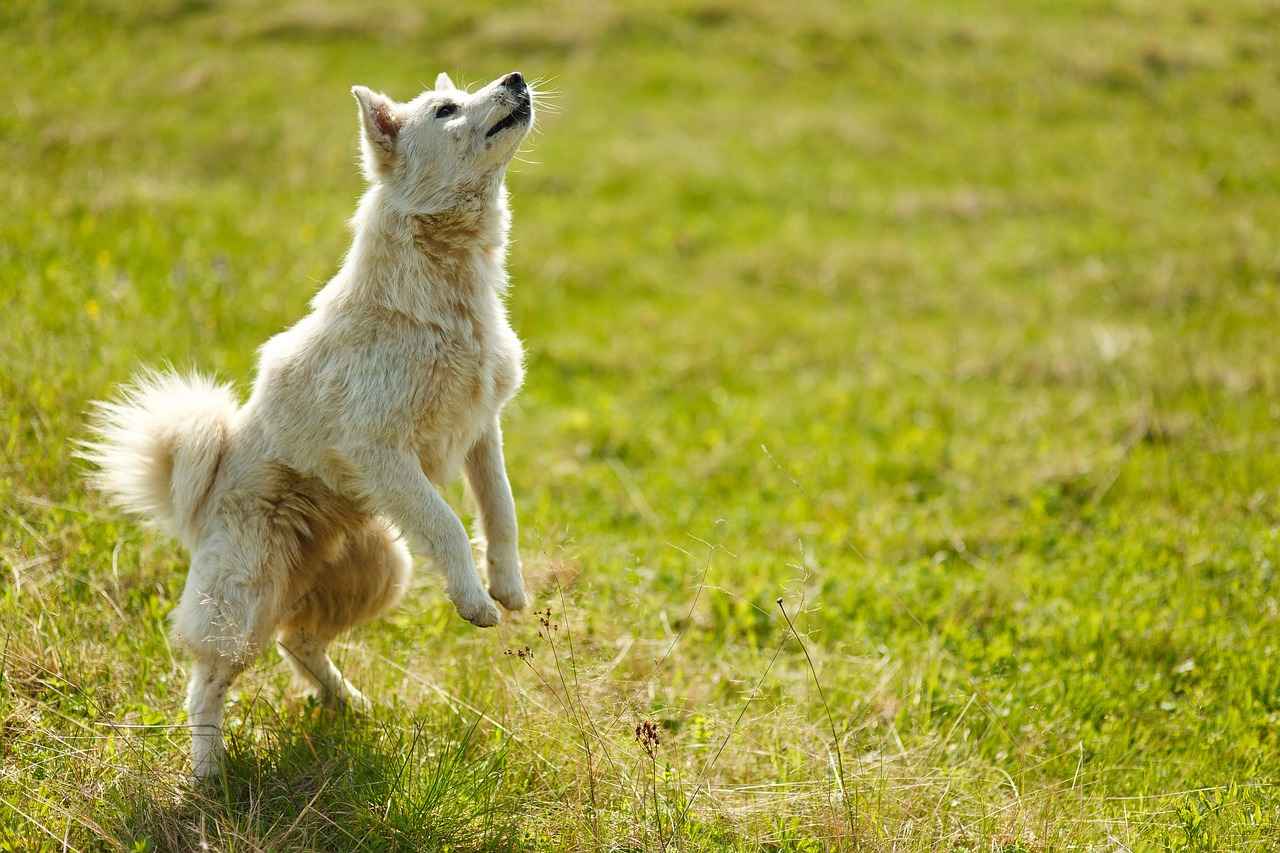
Health Implications of Bite Strength
Understanding bite strength is crucial for both wild and domestic dogs, as it carries significant implications for behavior, training, and safety in interactions with humans and other animals. The bite force of a dog can vary greatly based on its anatomy, breed, and environment, impacting how they interact with their surroundings.
Behavioral Insights
The behavior of a dog is often influenced by its bite strength. Wild dogs, which have evolved to hunt and survive, tend to exhibit more aggressive biting behavior, necessary for capturing prey. In contrast, domestic dogs, often bred for companionship, may display less biting aggression. Understanding these behavioral differences is essential for dog owners and trainers to foster safe interactions.
Training Considerations
Training plays a pivotal role in managing a dog’s bite strength. Awareness of a dog’s biting capabilities can guide owners in implementing effective training techniques. For instance, teaching commands, socialization, and positive reinforcement can help mitigate aggressive behaviors. Proper training not only enhances a dog’s ability to interact safely with humans but also promotes a harmonious relationship between dogs and other animals.
Preventing Dog Bites
Knowledge of a dog’s bite strength can significantly aid in preventing dog bites. Owners should recognize the potential risks associated with their dog’s behavior, particularly in unfamiliar situations or around children. By fostering a controlled environment and ensuring that dogs are well-trained and socialized, the likelihood of biting incidents can be reduced.
Wild Dog Conservation
Understanding the bite strength of wild dogs is equally important for conservation efforts. Recognizing their natural behaviors, including their biting capabilities, helps in creating effective strategies for their protection and survival in the wild. Educating the public about these aspects can foster respect and support for wildlife conservation initiatives.
Conclusion
In summary, the implications of bite strength extend beyond mere statistics; they encompass behavioral insights, training practices, and safety measures. By understanding these factors, dog owners can promote healthier interactions and contribute to the well-being of both domestic and wild canine populations.
Preventing Dog Bites
is a critical topic for dog owners, trainers, and the general public. Understanding a dog’s biting capabilities can significantly reduce the risk of incidents, highlighting the necessity of responsible ownership and effective training for domestic dogs.
Dog bites can occur for various reasons, including fear, stress, or territorial behavior. It is essential for dog owners to recognize the signs of discomfort or aggression in their pets. Training and socialization play vital roles in preventing these behaviors. Early exposure to different environments, people, and other animals can help a dog develop a balanced temperament.
| Key Factors in Preventing Dog Bites | Description |
|---|---|
| Socialization | Introducing dogs to various situations and stimuli to reduce fear and aggression. |
| Training | Utilizing positive reinforcement techniques to encourage desired behaviors. |
| Understanding Body Language | Learning to recognize signs of anxiety or aggression in dogs. |
| Responsible Ownership | Ensuring proper care, exercise, and mental stimulation for dogs. |
Moreover, educating the public about safe practices around dogs is crucial. Children, in particular, should be taught how to approach and interact with dogs safely. This includes understanding that not all dogs are friendly and respecting a dog’s personal space.
In addition, regular veterinary check-ups can help ensure that dogs are healthy and free from pain, which can lead to aggressive behavior. Owners should also be aware of their dog’s breed tendencies, as some breeds may have stronger biting instincts than others.
In conclusion, preventing dog bites requires a multifaceted approach involving responsible ownership, training, and education. By understanding a dog’s behavior and implementing effective strategies, we can create a safer environment for both dogs and people.
Wild Dog Conservation Efforts
are crucial for the survival of these remarkable animals in their natural habitats. As apex predators, wild dogs play a vital role in maintaining the balance of ecosystems. However, their populations are declining due to various threats, including habitat loss, human-wildlife conflict, and disease. Understanding their natural behaviors, including their bite strength, is essential for developing effective conservation strategies.
Wild dogs, such as the African wild dog and gray wolf, exhibit unique behaviors and adaptations that are critical for their survival. Their bite strength is not just a measure of physical power; it reflects their evolutionary adaptations for hunting and social interaction within packs. By studying these behaviors, conservationists can gain insights into the challenges wild dogs face in the wild.
- Habitat Preservation: Protecting the natural habitats of wild dogs is vital. Conservation efforts focus on creating and maintaining protected areas that allow these animals to thrive.
- Human-Wildlife Conflict Mitigation: Educating communities about the importance of wild dogs and implementing strategies to reduce conflicts can help in their conservation.
- Research and Monitoring: Ongoing research into the behaviors and health of wild dog populations aids in understanding their needs and the threats they face.
Moreover, conservationists emphasize the importance of public awareness and community involvement in wild dog conservation. Programs that engage local communities in conservation efforts can foster a sense of stewardship and contribute to the protection of these species.
In conclusion, the conservation of wild dogs is a multifaceted effort that requires a deep understanding of their natural behaviors, including their bite strength. By addressing the challenges they face and promoting their ecological importance, we can work towards ensuring their survival in the wild.

Conclusion: The Bite Strength Debate
In the intricate world of canine evolution, the debate surrounding the bite strength of wild dogs compared to their domestic counterparts is both fascinating and essential. While it is widely recognized that wild dogs generally exhibit stronger bites than domestic dogs, this difference is rooted in a combination of anatomical, behavioral, and environmental factors.
Bite force is measured in pounds per square inch (PSI), providing a numerical representation that allows for effective comparisons between species. Wild dogs, such as wolves and African wild dogs, have evolved to possess robust jaw structures and powerful musculature, enabling them to exert significant force when capturing prey. For instance, the gray wolf boasts a bite force of approximately 1,200 PSI, a testament to its evolutionary adaptations for survival.
In contrast, domestic dogs have undergone selective breeding, prioritizing temperament and companionship over physical prowess. This has resulted in a reduction in bite strength for many breeds, as their primary function has shifted away from hunting and survival. The jaw structure and teeth size of domestic dogs often reflect these changes, leading to less effective biting capabilities.
Moreover, the behavioral aspects of wild dogs contribute significantly to their biting power. These animals often exhibit aggressive biting behavior, necessary for their predatory lifestyle. In contrast, domestic dogs are typically bred for sociability, which can lead to less aggressive biting behavior. Understanding these differences is crucial for responsible ownership and training, particularly in preventing dog bites.
In summary, the disparity in bite strength between wild and domestic dogs highlights the complex interplay of evolutionary adaptations and environmental influences. Recognizing these distinctions not only enriches our understanding of canine behavior but also fosters a greater appreciation for the diverse roles that dogs play in our lives and ecosystems.
Frequently Asked Questions
- Do wild dogs really have stronger bites than domestic dogs?
Yes, wild dogs generally have stronger bites than domestic dogs due to their anatomical adaptations and survival needs. Their robust jaw structure and powerful muscles are essential for hunting and capturing prey.
- How is bite force measured?
Bite force is measured in pounds per square inch (PSI), which provides a way to quantify and compare the biting capabilities of different dog species, including both wild and domestic dogs.
- What anatomical features contribute to a wild dog’s bite strength?
Wild dogs have stronger jaw structures, larger teeth, and more developed jaw muscles compared to domestic dogs. These features allow them to exert greater force when biting, which is crucial for their predatory lifestyle.
- How does domestication affect a dog’s bite strength?
Domesticated dogs have often been bred for temperament and companionship rather than physical strength, which can lead to a reduction in bite force compared to their wild counterparts.
- What are some examples of wild dogs with strong bites?
Notable examples include the gray wolf, which has a bite force of about 1,200 PSI, and the African wild dog, known for its teamwork in hunting and strong bite for capturing prey.
- Why is understanding bite strength important?
Understanding bite strength is crucial for responsible dog ownership, training, and safety. It helps prevent dog bites and informs conservation efforts for wild dog species.
